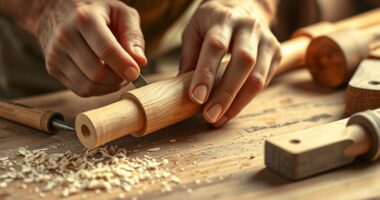Did you know that a jigsaw can cut through wood pieces up to a thickness of 2 inches? That’s nearly double the standard thickness of a 2×4 lumber, which measures about 1.5 inches by 3.5 inches! While many woodworkers rely on traditional saws for this task, understanding the nuances of jigsaw cutting 2×4 can open up new avenues in your woodworking projects. In this article, we will explore the capabilities of jigsaw usage when it comes to lumber like 2x4s, along with effective jigsaw techniques to maximize your results.
Key Takeaways
- A jigsaw can handle cuts through lumber up to 2 inches thick.
- Understanding jigsaw usage expands your woodworking options.
- Effective jigsaw techniques are essential for successful cuts.
- Choosing the right blade enhances cutting efficiency.
- Safety is paramount when using any woodworking tools.
The Basics of Jigsaws
Understanding jigsaw tools starts with familiarizing yourself with their fundamental components. The typical jigsaw features a base plate, a powerful motor, and a reciprocating blade. This combination allows the tool to perform intricate cuts as well as straight lines, making it essential for various woodworking projects.
Jigsaws operate through a simple mechanism where the motor drives the blade up and down at high speeds. This movement enables precise cutting. Many models come with variable speed settings, allowing you to adjust based on the material you are working with. Furthermore, orbital action provides additional cutting power, especially when tackling denser materials.
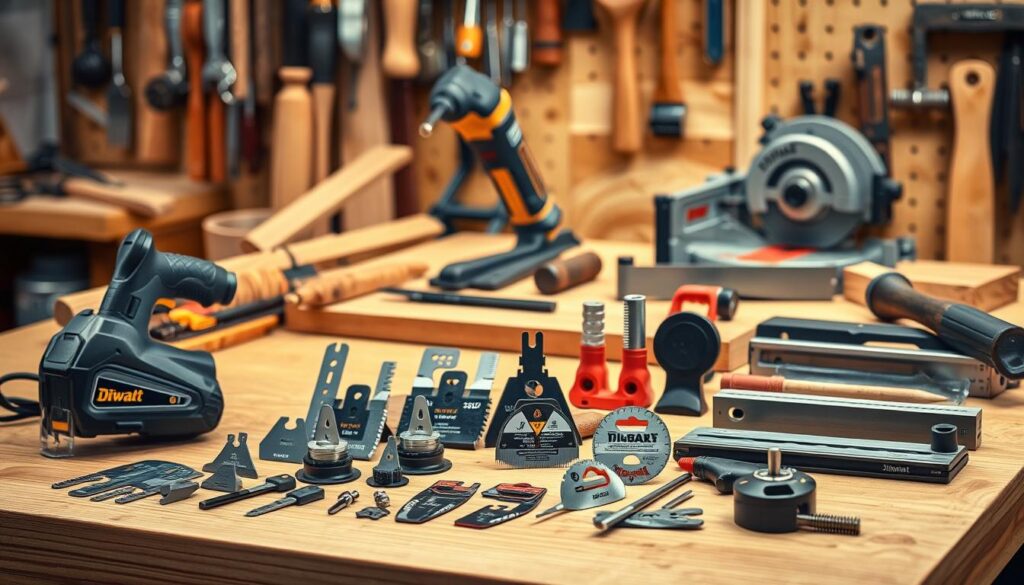
The versatility of jigsaws in the realm of power tools makes them ideal for a wide range of applications. From crafting intricate designs to making long cuts, understanding these jigsaw features can enhance your woodworking skills. Recognizing the limitations and capabilities of your jigsaw will empower you to use it efficiently for cutting materials like 2×4 lumber.
Understanding 2×4 Lumber
When working on carpentry projects, 2×4 lumber is often a go-to choice due to its versatility and availability. The common lumber dimensions for 2×4 lumber are nominally 2 inches by 4 inches, but after processing, the actual measurements are 1.5 inches by 3.5 inches. This distinction is important for anyone planning a project that requires precision.
In construction and woodworking, understanding 2×4 specifications is key for a variety of applications, including framing, furniture making, and even outdoor structures. Its lightweight nature makes it easy to handle while providing sufficient strength for light load-bearing tasks.
There are several types of lumber available, with common varieties including Pine and Fir. Pine is favored for its ease of use and workability, while Fir tends to be stronger and is used when additional durability is desired. Each type offers unique grain structures and densities, which can affect both the aesthetic and functional properties of your project.
| Type of Lumber | Weight (lbs/1000 ft) | Typical Uses |
|---|---|---|
| Pine | 2,800 | Framing, furniture, cabinetry |
| Fir | 3,200 | Structural framing, decking |
| Cedar | 2,400 | Outdoor furniture, fencing |
Whether you choose Pine for its workability or Fir for its strength, knowing the types of lumber and their specifications can guide you in selecting the right materials for your next building endeavor.
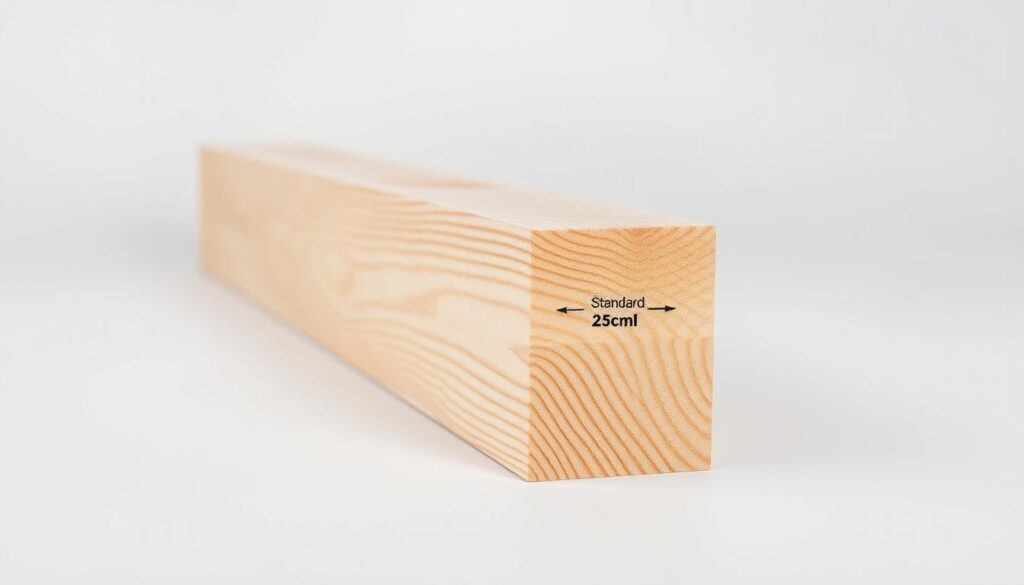
Can a Jigsaw Cut a 2×4? Discover the Surprising Answer
If you’ve ever wondered if your jigsaw can handle a 2×4, you’re not alone. Many DIY enthusiasts and woodworkers question the jigsaw cutting capacity when it comes to handling thicker materials like 2×4 lumber. While a jigsaw is a versatile tool, its effectiveness depends on several factors.
Standard jigsaw blades typically feature a shallow cutting depth. This limitation can make it challenging to achieve clean cuts through thicker boards. When using a jigsaw for a 2×4, selecting the right blade is crucial; using a longer, specialized blade can significantly enhance your cutting techniques.
In some situations, a jigsaw may be beneficial. If you aim for intricate cuts rather than straight lines, a jigsaw can provide more control. You might find that it’s suitable for more textured or non-linear cuts. In contrast, if straight accuracy is required for large cuts, other saws like circular or table saws may outperform.
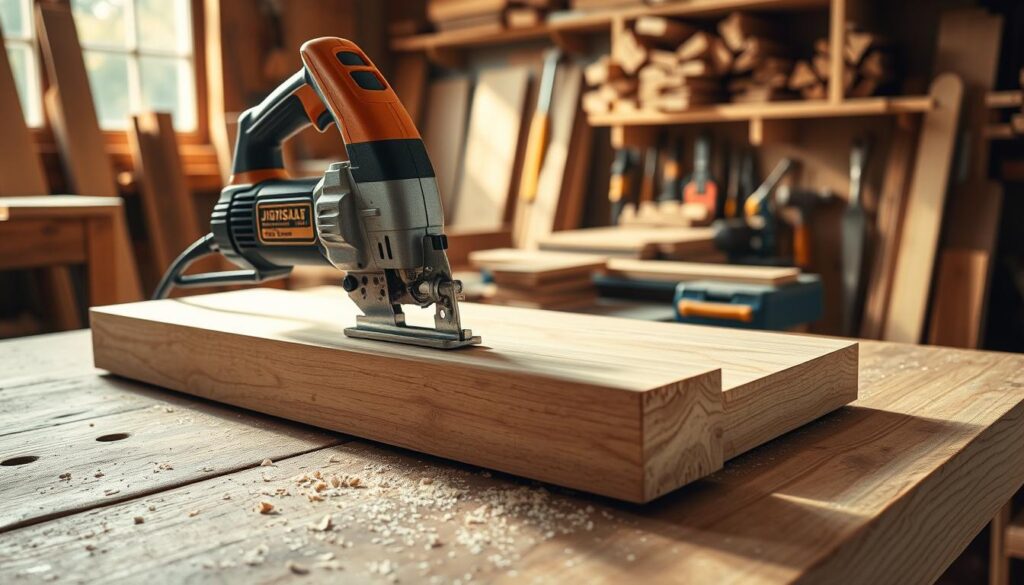
Ultimately, your choice of tool will depend on the project at hand. Measure your needs against the jigsaw’s capabilities for optimal results when tackling a 2×4.
Choosing the Right Blade for Jigsaw
Selecting the appropriate blade for your jigsaw plays a crucial role in achieving smooth, accurate cuts, especially when working with 2×4 lumber. The choice of jigsaw blades directly influences the efficiency and quality of your projects. Understanding the various blade types will empower you to make informed decisions for your woodworking tasks.
Types of Blades to Consider
When choosing jigsaw blades, consider the task at hand. Different blade types are optimized for specific materials. For basic woodworking, wood-cutting blades with clean teeth are ideal, allowing for swift and precise cuts. If working with tougher materials like metal, metal-cutting blades will offer the durability needed. For versatility, bi-metal blades combine features from both wood and metal blades, providing a multi-functional option suited for various projects.
Blade Material and Size
Blade materials significantly affect performance. High-carbon steel blades are perfect for softwoods, while high-speed steel blades are better for hardwoods and other dense materials. When it comes to size, a longer, coarse-tooth blade is optimal for cutting through thicker materials like 2x4s, ensuring that you can handle larger jobs without hassle. Ensuring you have the right jigsaw blades, blade types, and specifications for your woodworking tools will enhance not only the quality of your cuts but also your overall proficiency.
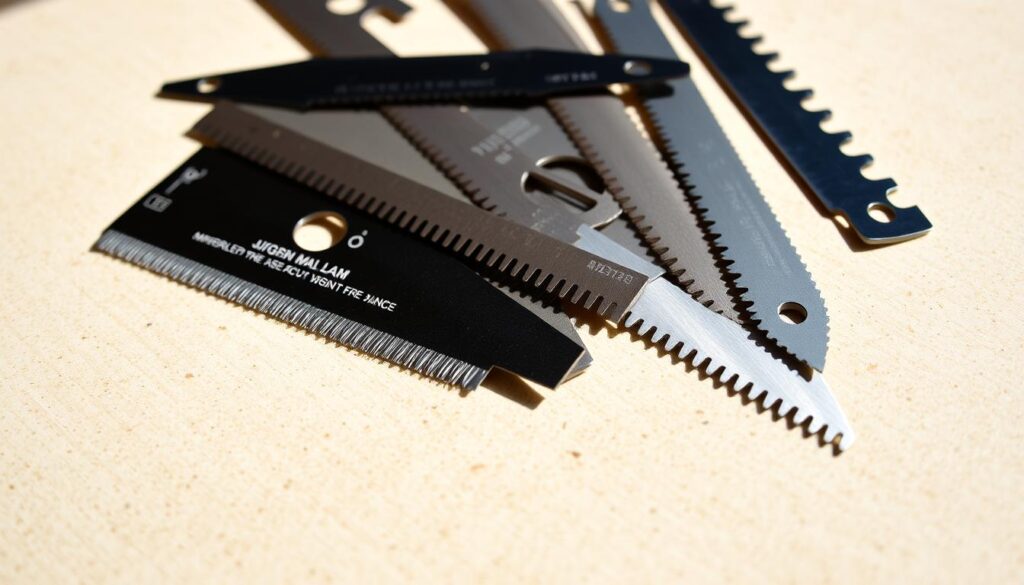
Techniques for Cutting a 2×4 with a Jigsaw
Successfully cutting a 2×4 with a jigsaw requires careful planning and execution. Applying the proper cutting techniques starts with two essential steps: preparing the workpiece and ensuring your jigsaw is set up correctly. These steps are crucial for achieving clean, precise cuts without putting yourself or your equipment at risk.
Preparing the Workpiece
Effective workpiece preparation is key to smooth and accurate cuts. Begin by securing your 2×4 on a stable surface, like a workbench or sawhorses. Ensure that it is level and that both ends are properly supported to prevent any wobbling during the cut. Clear the surrounding area of any obstacles that might interfere with your work. This approach enhances your focus while cutting and ensures safety throughout the process.
Setting Up Your Jigsaw
Now focus on the jigsaw setup for optimal performance. First, select the appropriate blade based on the thickness and type of wood. A fine-toothed blade is generally suitable for making intricate cuts, while a coarse blade can be used for faster, rough cuts. Adjust the jigsaw’s speed settings according to the material, using lower speeds for thicker wood and higher speeds for thinner pieces. With the right blade and speed setting in place, you enhance cutting precision and minimize effort, producing cleaner edges on your 2×4.

Safety Considerations When Using a Jigsaw
Working with a jigsaw can be a rewarding experience, but prioritizing safety is essential. Proper jigsaw safety not only protects you from injuries but also ensures a smooth and efficient woodworking process. One key aspect of safety involves wearing appropriate protective gear. At a minimum, always don safety goggles to shield your eyes from flying debris and use gloves to protect your hands from sharp edges or splinters.
Maintaining control during operation is vital to prevent accidents. Ensure that you have a firm grip on the workpiece, as this minimizes the risk of kickback. Misalignment can also lead to dangerous situations. Take your time to set up your cuts properly. Using dull blades is another common hazard that can result in unexpected breakage or injury, making it essential to inspect and replace blades as needed.
By adhering to these woodworking safety guidelines, you create a safer environment and enhance your overall cutting experience. Awareness of your surroundings, alongside the right safety measures, allows you to enjoy the project while minimizing risks.

Common Mistakes to Avoid
When using a jigsaw, several common woodworking mistakes can lead to ineffective cuts and safety hazards. Recognizing these issues early can make a significant difference in your woodworking experience. Two prevalent concerns are jigsaw misalignment and using dull blades, both of which can result in frustrating outcomes.
Misalignment Issues
One of the most frequent causes of poor cuts is jigsaw misalignment. If the jigsaw is not properly aligned with the wood, you may end up with crooked cuts. This misalignment not only affects the precision of your work but can also lead to dangerous situations, such as kickback. Always double-check the alignment before you start cutting to ensure a straight and smooth cut.
Using Dull Blades
Using dull blades can significantly complicate your work. A dull blade increases friction, making it harder to cut through the material. This situation can lead to overheating and potential damage to both the blade and the jigsaw. Regular blade maintenance is key. Ensure you replace or sharpen blades as needed to maintain efficiency and safety while working.
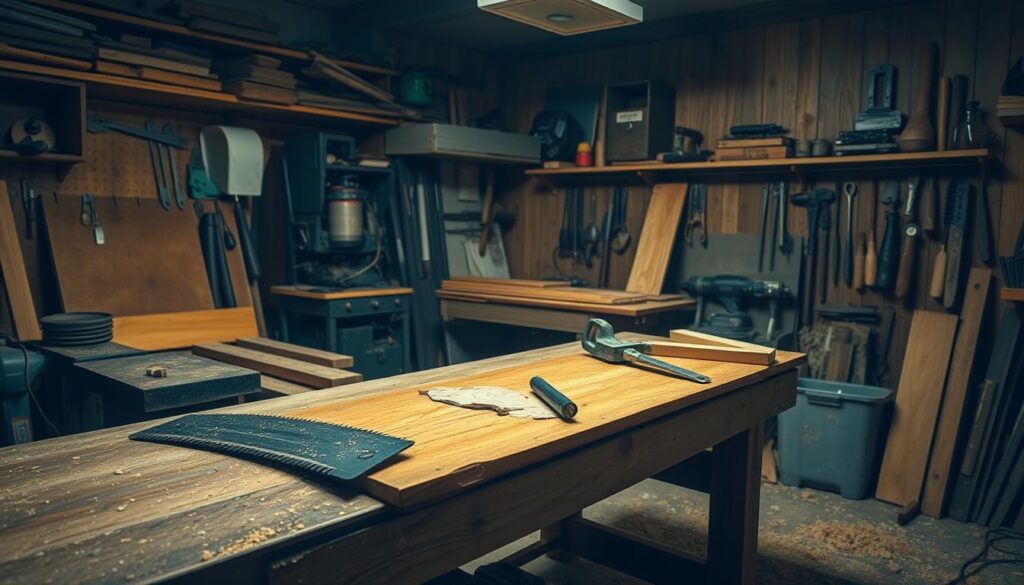
Enhancing Your Jigsaw Skills
Improving jigsaw skills requires practice, patience, and a willingness to experiment. As a beginner, focusing on the fundamentals will set a solid foundation for your woodworking journey. Here are some effective techniques and tips to get you started.
Practice Tips for Beginners
Start with basic exercises that emphasize steadiness and control. Cutting straight lines on scrap wood will help you gauge your accuracy. Aim to use various jigsaw techniques, such as adjusting the speed and pressure, to see how it affects the cut. Consider these practical exercises:
- Practice cutting at different speeds to find a comfortable rhythm.
- Try creating basic shapes, like circles and triangles, to hone your precision.
- Work with various thicknesses of lumber to develop versatility.
Advanced Cutting Techniques
Once you have confidence with the basics, it’s time to elevate your skills. Advanced cutting techniques allow you to create intricate and detailed work. Here are some woodworking tips to keep in mind:
- Experiment with cutting curves; a steady hand is crucial here.
- Learn to cut compound angles for more complex projects.
- Utilize guide rails for greater accuracy when cutting larger pieces.

Practicing on scrap materials not only boosts your confidence but also helps refine your jigsaw techniques without the worry of wasting resources. As you gain experience, you will find your cutting abilities improve, paving the way for more ambitious woodworking projects.
Alternatives to Jigsaws for Cutting 2x4s
When it comes to cutting 2×4 lumber, there are several woodworking alternatives to jigsaws that you might find more suitable for your projects. Each tool has its unique advantages, adding to your arsenal of cutting tools.
Circular saws rank high among saw types for their versatility and ease of use. These saws provide straight, precise cuts, making them ideal for larger pieces of wood. They excel when cutting through thicker 2x4s and are often faster than jigsaws.
Miter saws, another popular choice, offer the capability to make angled cuts with precision. These saws are exceptional for intricate wood projects that require precise angles. Although they are not as portable as other cutting tools, their accuracy is hard to match.
Reciprocating saws hold a special place for their demolition capabilities. Ideal for tougher jobs, these saws can easily handle thicker wood and are particularly useful in situations where a jigsaw may struggle.
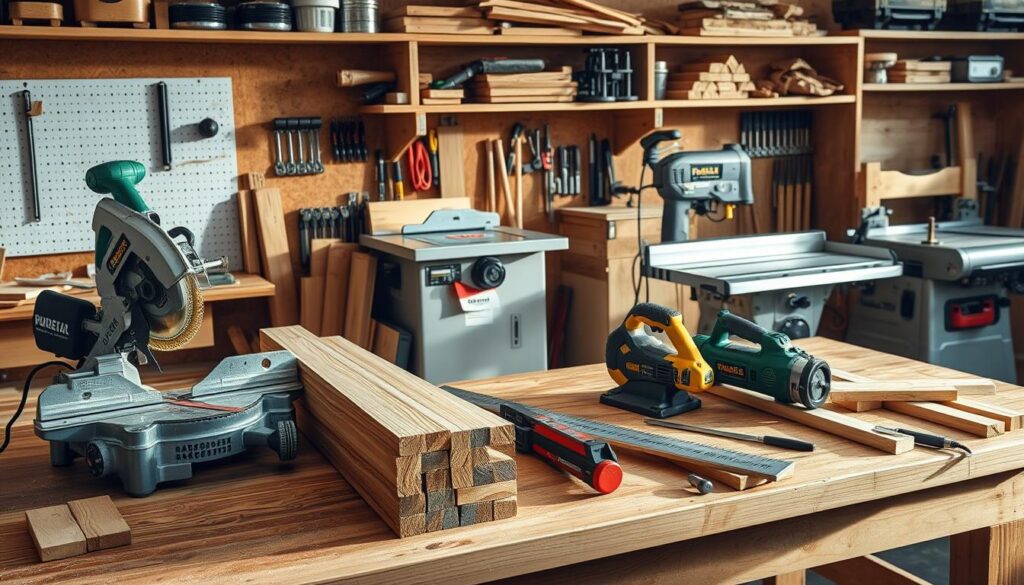
| Saw Type | Advantages | Ideal Use Cases |
|---|---|---|
| Circular Saw | Fast, versatile, portable | Long straight cuts in sheets or dimensional lumber |
| Miter Saw | Precise angled cuts, easy to use | Framing, molding, and detailed carpentry |
| Reciprocating Saw | Powerful, good for tougher cuts | Renovation and demolition projects |
In summary, exploring various saw types can greatly enhance your cutting experience. Choosing the right saw for your specific needs ultimately streamlines the process of working with 2×4 lumber, allowing for efficient and accurate results.
Advantages of Using a Jigsaw
Using a jigsaw offers numerous jigsaw benefits that make it a favored choice among both hobbyists and professionals. This tool excels in versatile cutting, allowing you to work with various materials such as wood, plastic, and metal. Such flexibility makes it ideal for a wide range of projects, from simple home repairs to complex woodworking designs.
One major advantage lies in the jigsaw’s ability to cut intricate shapes with precision. Whether you’re crafting detailed patterns or making smooth curves, this tool enables you to achieve a high level of accuracy. For projects that require creativity and finesse, jigsaws are invaluable woodworking tools.
The convenience of a jigsaw extends to its ergonomic design, which helps reduce fatigue during prolonged use. Its lightweight nature makes it easy to handle, allowing you to work comfortably, even for extended periods. With a jigsaw in your toolkit, you can tackle any project effortlessly.
Consider the following table, which outlines some of the primary advantages of using a jigsaw:
| Advantage | Description |
|---|---|
| Versatile Cutting | Can cut through various materials including wood, metal, and plastic. |
| Precision | Allows for intricate cuts and curves, excellent for detailed work. |
| Lightweight Design | Easy to handle, reducing fatigue during long projects. |
| Portability | Can be used in various locations due to its compact size. |
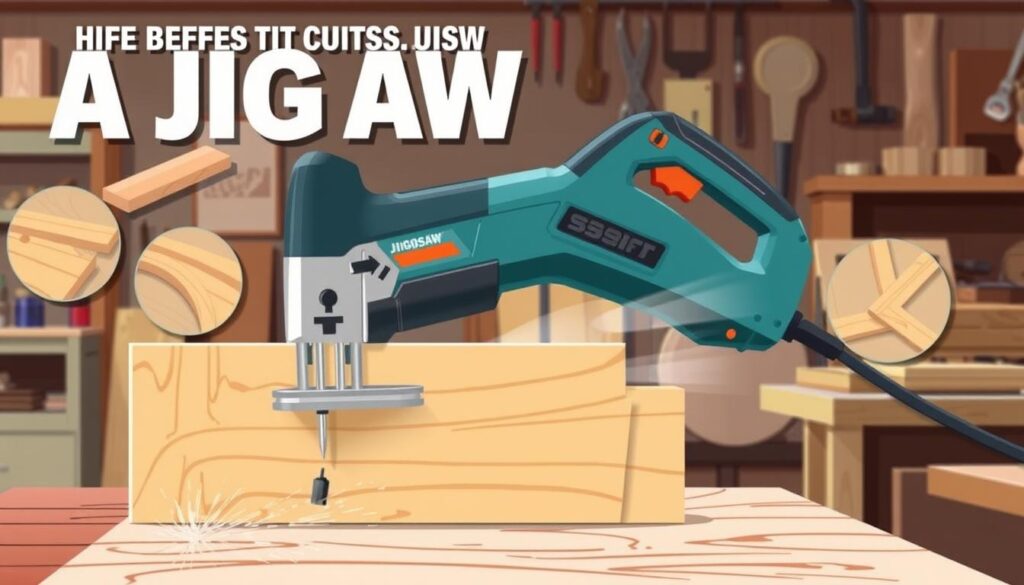
With its many advantages, the jigsaw remains a top choice for versatile cutting in woodworking, helping you achieve results that meet your expectations.
Maintenance Tips for Your Jigsaw
Proper jigsaw maintenance is vital for ensuring the longevity and optimal performance of your tool. Regular cleaning of the blade and motor can enhance the efficiency of your jigsaw and help avoid common issues. Before starting any maintenance, always disconnect the tool from the power source for safety.
One key aspect of tool care involves inspecting the blades for wear and tear. Over time, blades can dull or become damaged, which can affect cutting precision. Make it a habit to check the condition of your blades and replace them when necessary.
Another essential practice is to store your jigsaw properly. Keeping it in a dry, safe location will prevent moisture buildup, which can lead to rust. Using a protective case or holders can also shield it from physical damage.
Regularly checking for misalignment in your jigsaw can save you from unexpected complications while cutting. Ensuring all parts are correctly aligned will help avoid unnecessary strain on the motor and prolonging tool life.
| Maintenance Task | Frequency | Benefits |
|---|---|---|
| Clean Blade and Motor | After every use | Increases cutting efficiency |
| Inspect Blades | Monthly | Maintains cutting precision |
| Check for Misalignments | Before each major project | Prevents operational issues |
| Store Properly | Always | Reduces risk of damage and rust |

Real-World Applications of Jigsaw Cuts
Jigsaws serve as versatile tools in a variety of woodworking projects. They enable users to unleash their creativity, facilitating designs that range from functional furniture to artistic crafts. With a bit of practice, you can achieve impressive results using jigsaw applications in numerous real-world contexts.
One of the most popular innovative uses of jigsaws is in furniture making. From intricate table legs to unique shelving designs, these tools can produce precise cuts that make your creations stand out. The ability to navigate curves and angles allows for custom pieces that fit your style and space.
Beyond furniture, jigsaws excel in crafting detailed designs for home decor. Think of wall art, picture frames, or decorative panels; all of these woodworking projects can benefit from the detail a jigsaw provides. You have the freedom to experiment with shapes and patterns, making the possibilities endless.
DIY home improvement tasks often call for adaptability, and jigsaws shine in this regard. Whether you’re replacing old countertops or creating new storage solutions, the versatility of jigsaw applications allows for seamless transitions between materials and forms. You can tackle both straight and curved cuts, making renovation projects simpler and more enjoyable.
Overall, jigsaw tools present a world of opportunity. Each woodworking project you undertake can transform your living space while reflecting your unique taste and personality. Embrace the innovative uses of jigsaws to add a personal touch to your home.
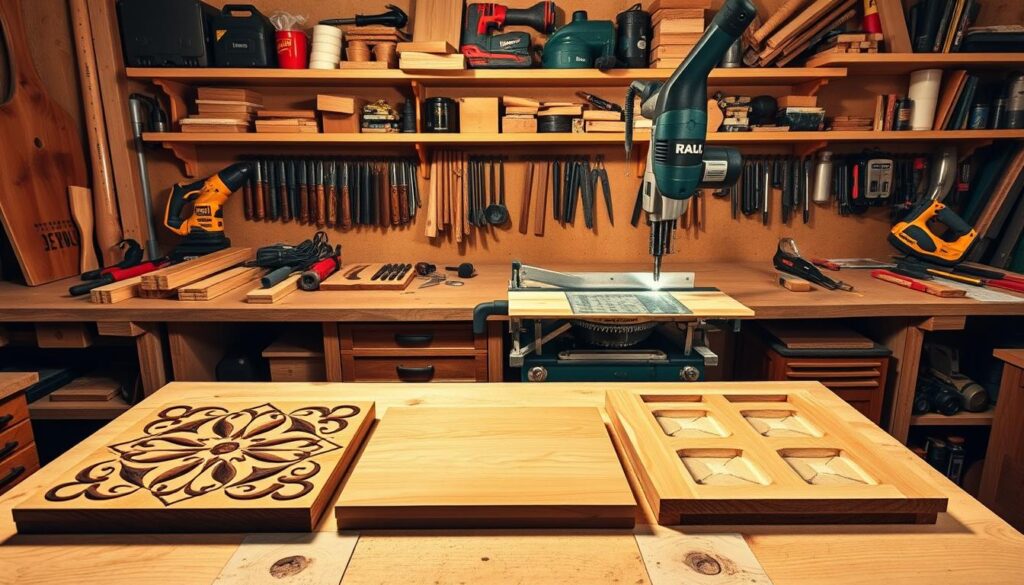
Conclusion
In summary, this article has provided valuable insights into the world of jigsaw cutting 2×4 lumber. By understanding the capabilities of your jigsaw, selecting the right blade, and employing effective techniques, you can achieve precision cuts that enhance your woodworking projects. Safety considerations should always remain at the forefront of your mind, ensuring a smooth and accident-free experience while working with power tools.
The real takeaway from these woodworking insights is your potential to confidently tackle projects using a jigsaw for cutting 2x4s. With the right preparation and practice, you can elevate your woodworking skills. Embrace the versatility of the jigsaw and prepare to enjoy the creative possibilities it offers in your upcoming tasks.





